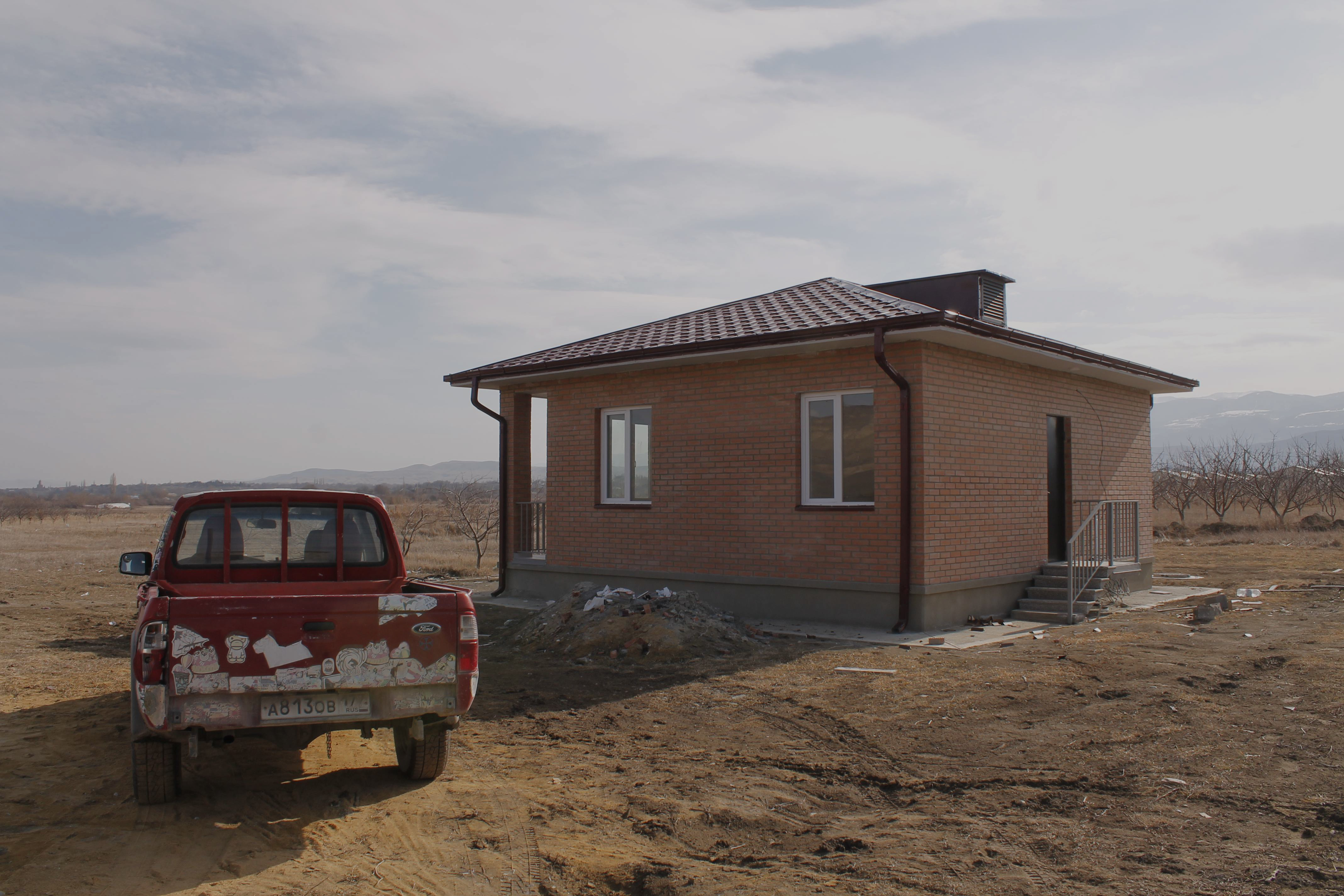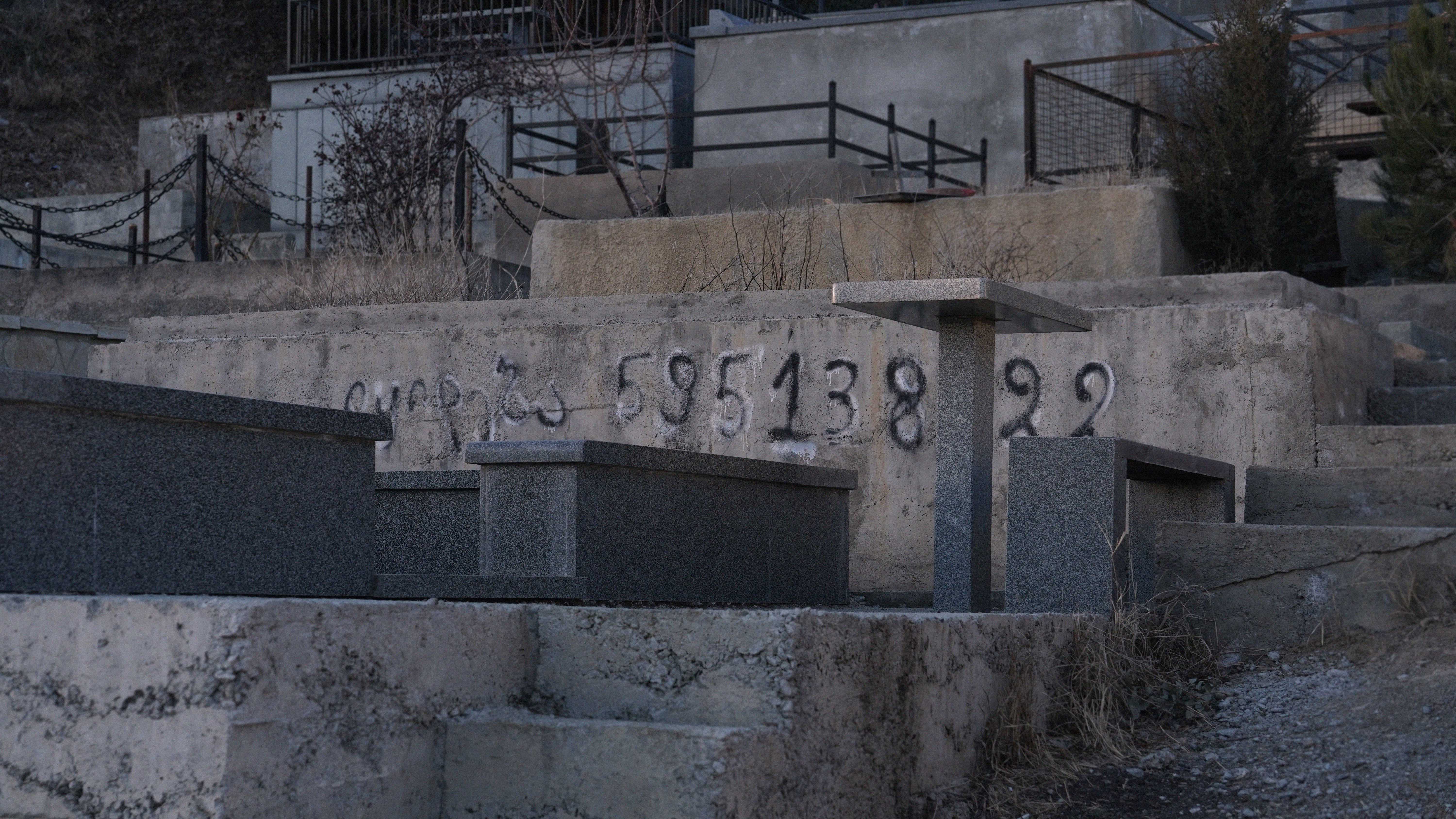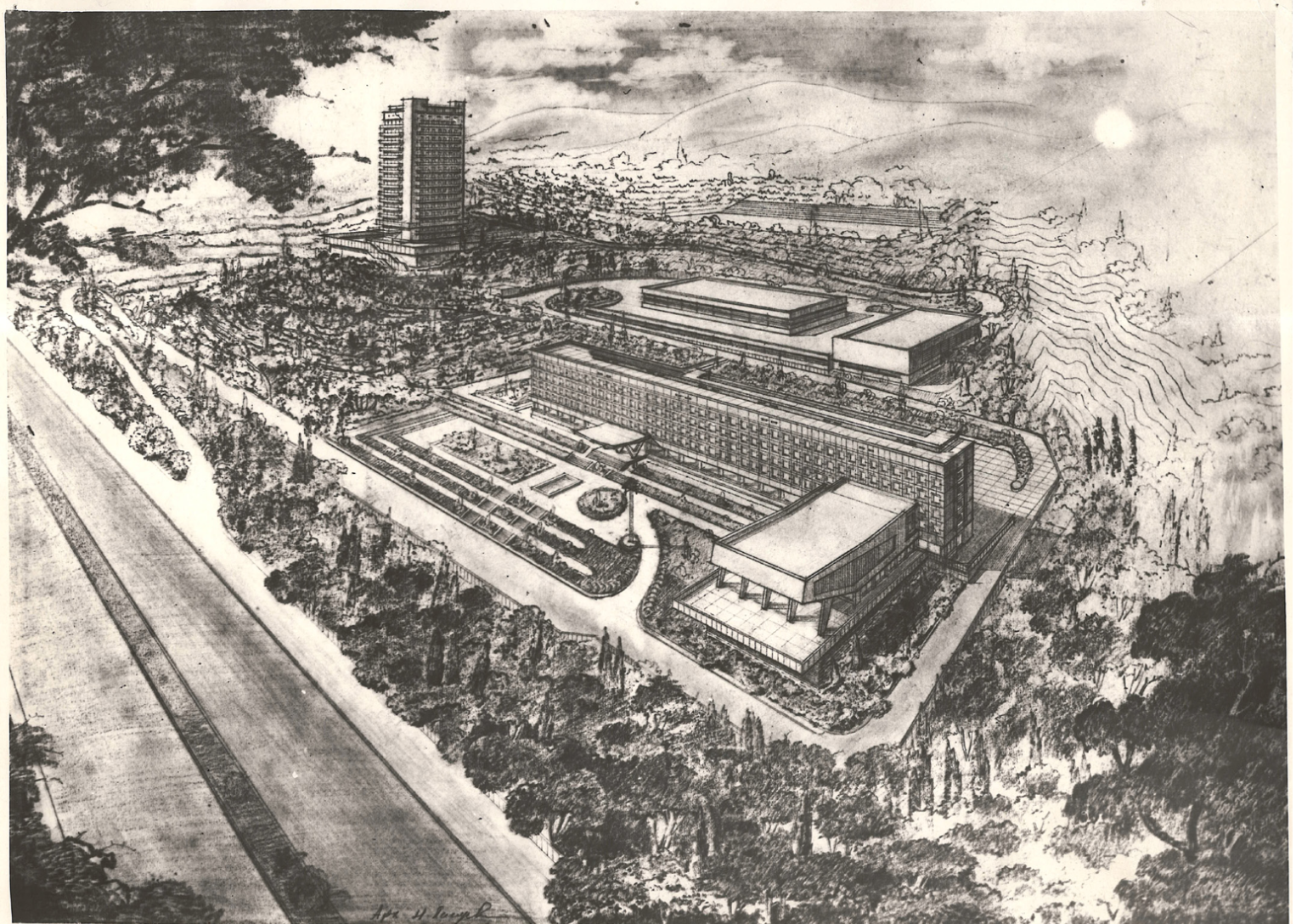Over the past year, Armenia and Nagorno-Karabakh have been grappling
with the challenge of finding durable housing for people displaced
during the 2020 war. The problem is not new for the Armenian
government: the country has been trying to resolve the housing
crisis for refugees displaced from Azerbaijan for over 30 years.
Using statistics, interviews, and other sources, Chai Khana explored
how government policy has shifted toward refugees over the
decades.
When Armenia declared its independence from the Soviet Union in
1991, it faced several immediate crises, including the ongoing war
with Azerbaijan and waves of refugees fleeing the fighting.
The most pressing was the war, which, according to the Armenian
government, displaced over a half a million ethnic Armenians,
360,000 of which moved to Armenia. Official Soviet census figures
put the number at closer to 352,000. Regardless of the exact amount,
the challenge was enormous for the struggling new state, especially
since the government was already facing hundreds of thousands of
displaced people due to the 1988 earthquake in the northern Armenian
town of Gyumri.
The last census of the USSR was done in 1989, which may not be a
reliable source to consider for this research, as the
Armenian-Azerbaijani conflict started prior to that. By 1988, both
populations were already mixing: Armenians fleeing Azerbaijan and
Azerbaijanis fleeing Armenia.


Several thousand ethnic Armenians (no official number available)
fled Azerbaijan and settled in Russia, USA and Europe. Many of them
never came to Armenia and went directly to third countries, but some
stayed in Armenia for some time before moving abroad to avoid the
economic crisis and ongoing war.
Aleksey Mnatsakanov was born in Baku and fled his hometown a week
before the Baku pogroms. “I was 12 so I remember everything very
well,” he says. Aleksey’s family first settled in Russia with some
relatives, but eventually moved to the USA.
Anahit Baghdasaryan’s parents were both born in Azerbaijan. Her
father moved to Armenia prior to the war; her mother was forced to
flee from Ganja in 1989.
“After the Sumgait events they realized they should move, that it
was dangerous to stay there,” Anahit says.
Emergency support for emerging crisis
In addition to the refugee crisis created by the war, the Armenian
government was also facing waves of ethnic Armenians seeking shelter
in the country from other post-Soviet conflicts, including in
Chechnya and neighboring Georgia. The U.S. Committee for Refugees
and Immigrants reported that 11,000 ethnic Armenians left their
homes in the former Soviet Union and resettled in Armenia. The
Armenian government, however, did not consider them refugees and
they were not eligible for the housing solutions created for those
who were displaced by the war with Azerbaijan.

A three-pronged housing policy
By 1999, five years after the end of the war, the government decided
to adopt a more organized approach to the housing crisis. In
November 1999 the Armenian government created the Department of
Regulation of Migration and Refugees to solve the refugee housing
issues and assist them to fully integrate into society.
The department created a program that aimed to house all eligible
refugees in 2000. It was unable to fully execute the program,
however, due to the lack of resources.
While the program fell short of its goal, by July 2004, 3800 refugee
families (approximately 15,000 people) had received housing,
including 300 who received assistance from the Armenian government.
The rest were housed through programs financed by international
donors, such as The Norwegian Refugee Council, The UN Refugee Agency
and the German Government.
“With the help of international donors, houses and cottages were
built in different regions,” Gagik Yeganyan, the former head of the
Migration Service of Armenia, says.
The district built in the city of Charentsavan over the course of
three stages (from 1995 to 2000) was financed by international
donors.
“According to international law, the hosting country does not have a
legal obligation to provide refugees with shelter and
accommodation,” Yeganyan says. “But this was a question that had
other layers to it: people became refugees as a result of an
Armenian movement, the Karabakh Movement, and because of the
conflict and the war everyone paid some price.”
He notes that the population in Armenia paid the price of living in
economic hardship; the population of Karabakh paid the price of
constant bombing; and the Armenian diaspora paid by helping Armenia
economically and, in some cases, even coming and fighting. The
Armenian population of Soviet Azerbaijan paid one of the biggest
prices: losing their houses and fortunes and being subjected to
violence and forcefully displaced.
“It was a moral question already, and that is how we presented it to
the government. It does not matter that the person came to his/her
“motherland.” They had lost everything, and the poverty could make
them leave Armenia,” Yeganyan says, adding that in 2004 the
committee went to all dormitories and hotels housing refugees to
collect data on the population and their living conditions.
In May 2004, ten years after the end of the war, the Armenian
government sought to resolve the problem through the act “On the
Priority Housing Program for Persons Deported from Azerbaijan in
1988-1992.” The act outlined a new, $16-million-dollar program to
address the housing issue, as well as the department’s efforts to
date. It underscored the financial issue, noting that fully solving
the problem would cost more than $50 million.
Based on the numbers outlined in the act, approximately 65,000
people displaced from Azerbaijan remained in the country and needed
housing. These numbers are not enough to calculate how many total
refugees from Azerbaijan remained in the country, however. An
unknown number were able to settle with relatives or friends. Some
were even able to exchange apartments and houses in Azerbaijan with
Azerbaijanis who were forced to leave Armenia.
The act of 2004 noted that 10,000 refugee families (approximately
40,000 people) still needed housing, including 3470 families
(approximately 13,880 people) living in extreme poverty. The new
government program created by the act envisioned resolving the
housing problem through housing vouchers, government-built cottages,
and giving refugees the chance to privatize the government-owned
buildings where they were living (dormitories, old hotel rooms,
etc).
“Starting from 2005 a
huge amount of money was allocated from the budget every year to
solve this issue. Approximately 1200 families received apartment
purchase vouchers by 2008; each year vouchers were given to 300-400
families,” Yeganyan says, adding that approximately 200 of those
families did not manage to obtain houses, as the vouchers had to be
used within six months of being issued.
“After 2008, due to the global financial crisis, Armenia had to
abandon many social programs, including this one,” Yeganyan says.
Three decades of displacement
“They completely
stopped talking about refugees after 2009,” Oksana Musayelyan, a
refugee from Baku and the founder of Refugee Voice NGO, says.
“The problem became normalized as people had been living here for
more than 15 years and many of them did not have refugee status
anymore. Some of them had to take citizenship.I don’t want to say
they were “forced,” but that was the feeling,” Oksanna says.
“The refugee status was the only thing that gave them some guarantee
that their rights are recognized by someone in the international
community. Taking citizenship would mean to give up on the chance to
get a certificate as a refugee or receive restitution one day. But
at the same time the status limited people a lot.”
Oksanna says even borrowing a book from a library was an issue for
those with refugee status. “There were no social programs to
integrate refugees into society, which requires an integration
policy in the county and we didn’t have one. They were saying: ‘you
are an Armenian, you came to Armenia, and so what’s the problem?’”
Oksanna says, noting that this was one of the reasons for the
massive migration of the refugees from Armenia to other
countries.
“Armenia was not
able to use the potential that Armenian refugees from Azerbaijan
brought with them,” she says.
Oksanna started to advocate for housing for refugees in 2017. With
her organization, Refugee Voice, she collected data from
approximately 20,000 people who had not gotten Armenian citizenship
yet and still had refugee status.
Oksanna received her housing voucher in 2015, although not through
the three-stage program. A mental health institute opened in the
building where she was living at the time, and the government
allocated housing vouchers to the nine families (five of which were
refugee families) living in the building.
The housing program was forgotten until 2019, when the newly elected
government decided to allocate budgetary funds to address the
issue.
“Between 2008 to 2019
many families who lived in extremely bad conditions left Armenia,”
Nelly Davtyan, the Public Relations Coordinator of Migration Service
of Armenia, says.
Under the 2019 program, socially vulnerable families living in
Yerevan received housing vouchers.
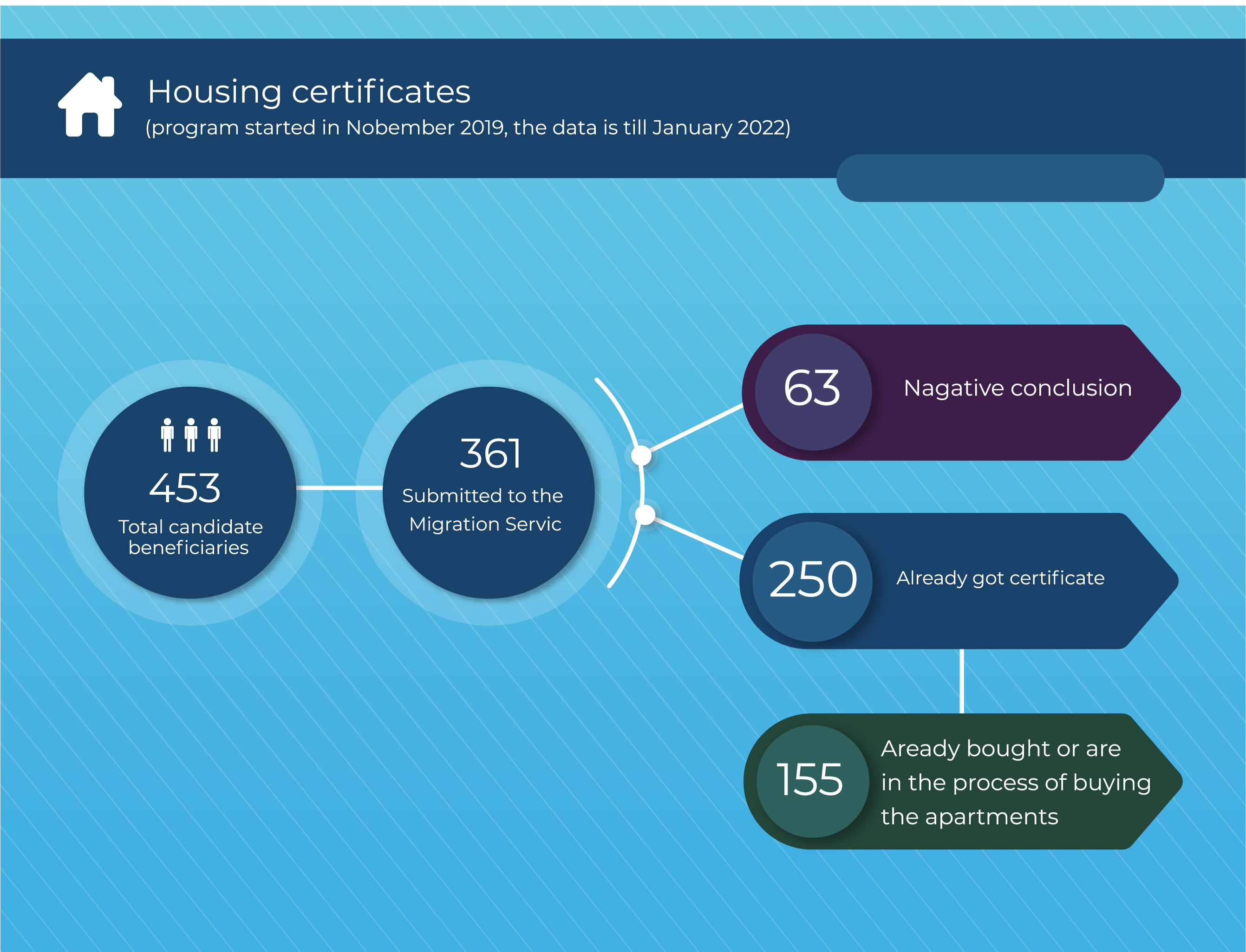
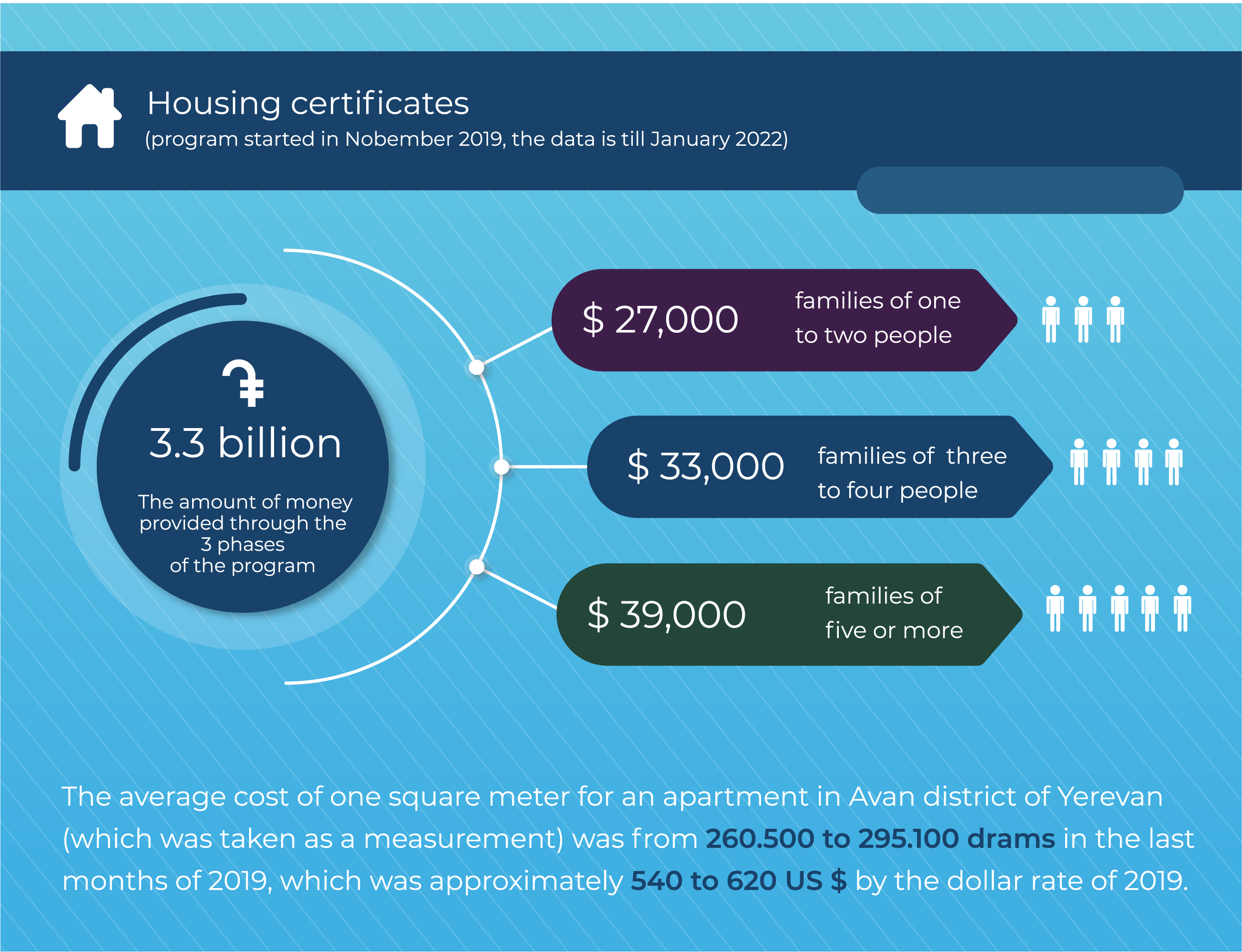
Rima Abrahamyan and her family had to flee Baku in 1988. For a while they rented an apartment but eventually settled in an old university building in Yerevan where several families had already relocated. Abrahamyan’s family received a housing voucher under the 2019 program. Abrahamyan bought her house and moved to the city of Armavir in January 2021.
According to the Department of Regulation of Migration and Refugees, this program will resolve the housing crisis for the most vulnerable in Yerevan. Once it is complete, a new three-stage program will start for the 250 refugee families living in extreme poverty in the regions.
